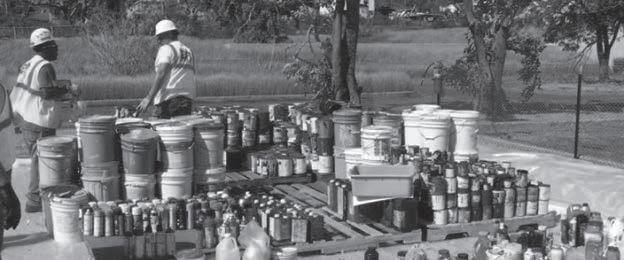
4 minute read
Household Hazardous Waste Management
By Victoria Davis, Senior Planner, UVLSRPC
Regional planning commissions play a major role in organizing and carrying out household hazardous waste collections. Many events occur throughout the year around the state. Two of the most active regional planning commissions in carrying out hazardous household hazardous waste collections are Lakes Region Planning Commission and Upper Valley Lake Sunapee Regional Planning Commission. The primary benefits to RPC membership communities are reduced cost, protection against illegal dumping, protected water resources along with the health and safety of the community.
What is HHW?
Household Hazardous Wastes (HHW) are toxic or hazardous materials generated in homes and disposed of most properly at a household hazardous waste collections handled by properly licensed disposal companies. Examples of hazardous waste include oil-based paint, solvents, pesticides, cleaning agents, drain cleaner, mercury, unidentified mixed chemicals, and much more. These materials can injure you, your family, or your pets; damage the environment; and contaminate our drinking water supplies if not handled with care. New Hampshire’s abundant natural resources are important to our way of life and our economy. With lakes, ponds, rivers, and streams scattered across the state it is important to have clean water for recreation and since more than half the homes in the state get their water from aquifers, it is important to maintain clean drinking water. One gallon of oil, for example, can contaminate one million gallons of water.
It is important to note that latex or acrylic paints are not considered hazardous in New Hampshire and so are generally not collected at HHW events. These can be dried out at home using kitty litter, sawdust, or shredded paper and added to the regular trash.
Some hazardous wastes are managed every day at transfer stations to ship for proper treatment, disposal or recycling. These are known as universal wastes, a category of regulated hazardous waste comprised of certain widely produced items like antifreeze, rechargeable batteries, cathode ray tubes, fluorescent lamps, and other mercury containing devices. Although universal waste items are considered hazardous, they are also considered to be a lower risk, so they have less stringent regulations allowing waste facilities to collect them on a regular basis. This lowers the management costs of these common hazardous wastes and provides greater convenience to residents, allowing them to drop off these items at local transfer stations instead of waiting for special collections.
Typically, hazardous products have warning labels indicating their toxicity. Watch for signal words on labels like “Poison,” “Caution,” or “Warning.” You might wonder why companies do not create products with safer ingredients that will not pollute or do harm. It is simply that federal regulations on toxic chemicals are weak, and toxic ingredients are often protected as trade secrets. You can find science-based evaluations of cleaning products at the Environmental Working Group website (https:// www.ewg.org/consumer-guides/guidehealthy-cleaning) and find healthier alternatives. The EWG also evaluates personal care products and foods.
Household Hazardous Waste Collections
There are multiple methods for providing HHW collections: 1.) single town; 2.) multiple town; and 3.) regional (regional planning or solid waste districts). These can be one day a year or multiple days a year at various locations such as municipal transfer stations or school parking lots. By pooling municipal resources and working with other municipalities, communities can often realize benefits such as favorable contract pricing and combined administration.
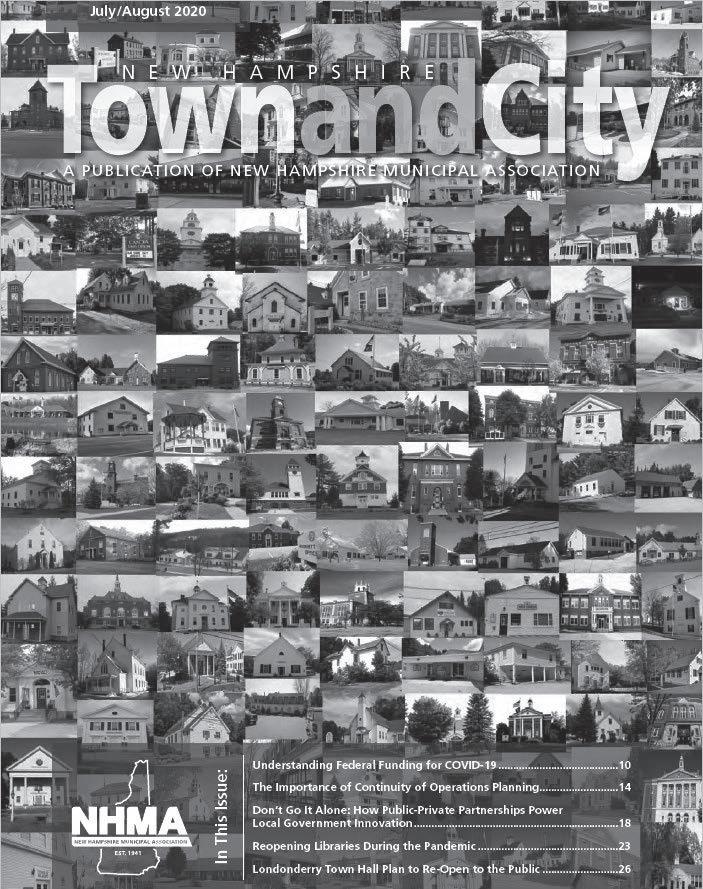
There is also the option of a semi-per- manent HHW collection facility that is open several days a week during the warmer months or a permanent facility open for the entire year. There are no true permanent facilities in the State of New Hampshire. In contrast, the State of Vermont has several permanent facilities which provide greater year-round accessibility. A permanent facility is especially useful when a house is sold or someone dies and the house must be cleaned out in the cold months. Often, there is nowhere to take HHW in the winter months in NH.
There are several regional HHW collection programs in NH including those provided by the Lakes Region Planning Commission (LRPC) and the Upper Valley Lakes Sunapee Regional Planning Commission (UVLSRPC) which each coordinates a series of regional one-day collections in warmer weather, serving a total of about 50 communities across the central part of the state. Each RPC structures their collections and billing in a different fashion which best meets the needs and expectations of their constituent communities.
According to the State Department of Environmental Services, there were about 21 different HHW collection programs in the State serving about 160 municipalities. You can get the list of collections Statewide by visiting the DES website: https://www.des.nh.gov/ waste/household-hazardous-waste.
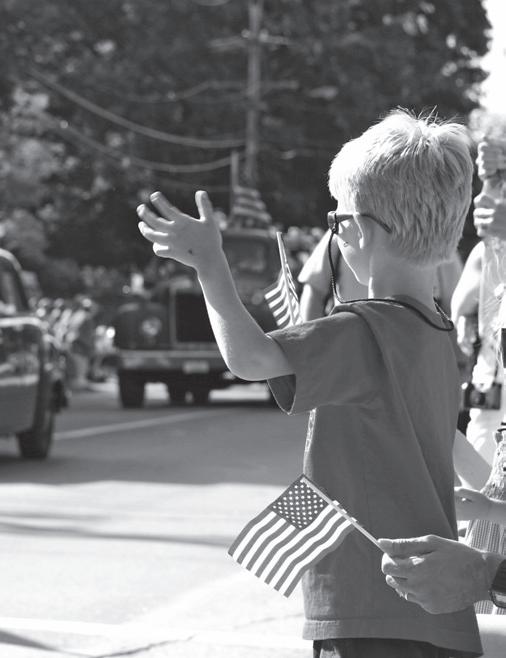
Providing opportunities for easy, costefficient disposal of HHW reduces the likelihood of these materials ending up in municipal trash at landfills or dumped at the end of a dirt road. This can reduce costs to the community related to risk to municipal employees on the trash collection trucks, transfer stations, and landfills, as well as cleanup costs.
According to the Regional Operations Manager of a HHW vendor with of-
We are pleased to continue to deliver the print edition to member subscribers, however, should you find the digital version sufficient and no longer require a print copy, please let us know at nhmainfo@nhmunicipal.org. Thank
We are pleased to continue to deliver the print edition to member subscribers, however, should you find the digital version sufficient and no longer require a print copy, please let us know at nhmainfo@nhmunicipal.org. or by contacting Tim Fortier.
HAZARDOUS WASTE from page 33 fices in NH, the costs of labor and transportation for a 10- to 50-gallon oil spill by the side of the road starts at around $5,000–before disposal costs. They had a 2021 cleanup of a drum of a more challenging waste that totaled more than $90,000. The reality is that one illegal dumping can cost as much to emergency clean up as an entire regional collection serving thousands of households.
This pie chart illustrates the average of materials collected by the two regional planning commissions in 2022, totaling about 80,000 pounds. Approximately 80% of materials collected were ignitables, primarily oil-based paint and old gas or oil mixtures; 16% were toxins such as pesticides and mercury; 4% were corrosives including acids, bases, chlorine (often cleaners); and a negligible percentage were reactives such as peroxides. Nothing we want in our drinking water!
LRPC hosts collections for participating communities at on July 29 and Aug. 5 this year for more information visit their website (http://www.lakesrpc.org/serviceshhw.asp). UVLSRPC holds collections open to all on May 6, June 3, July 14, Aug. 5, and Sept. 30 for more information visit their website (https://hhw.uvlsrpc.org/). For information about HHW collections, hosting a collection, and information
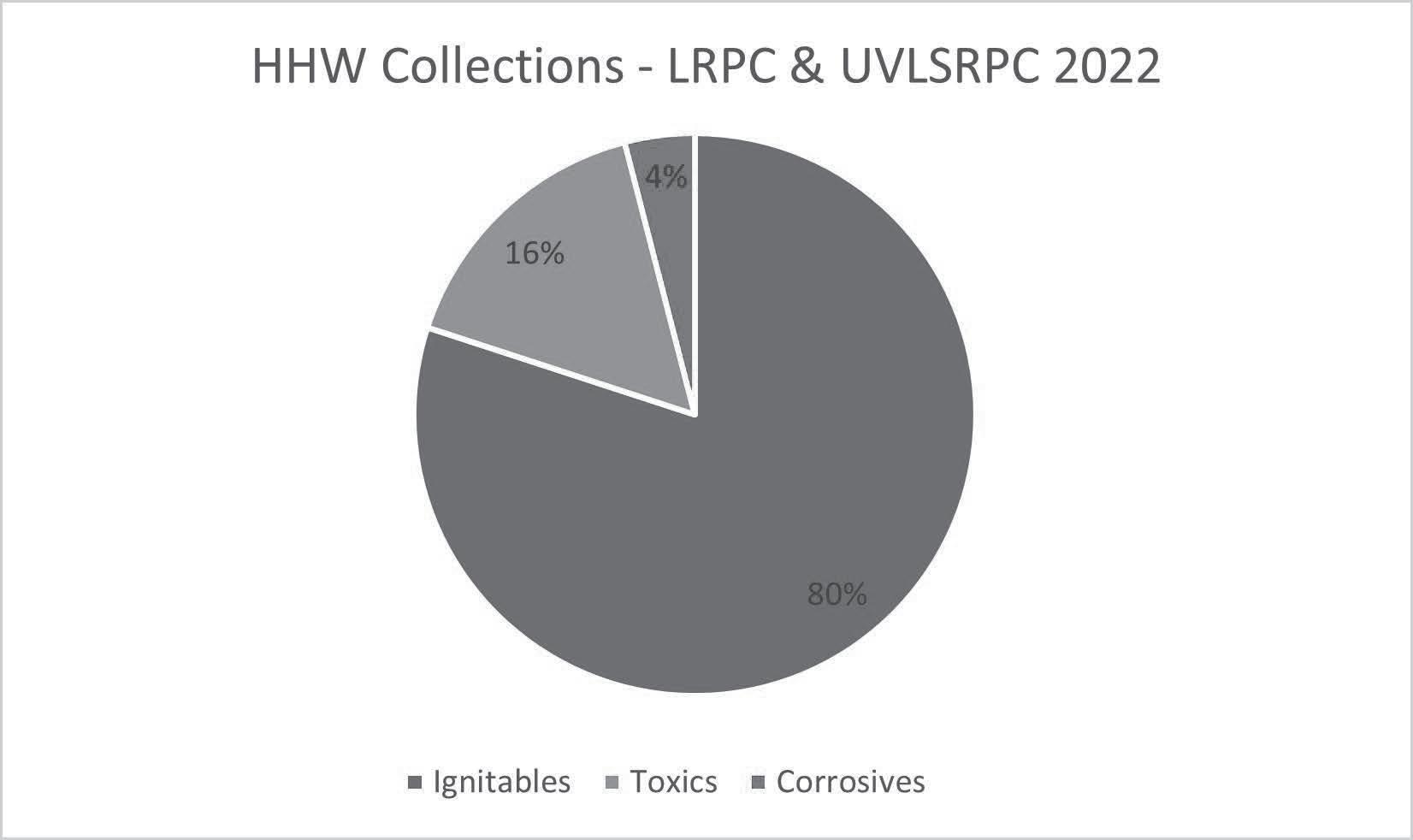
$90.00 In-person $70.00 — Virtual about hazardous household products and safer alternatives visit the NH DES website (https://www.des.nh.gov/ waste/household-hazardous-waste).
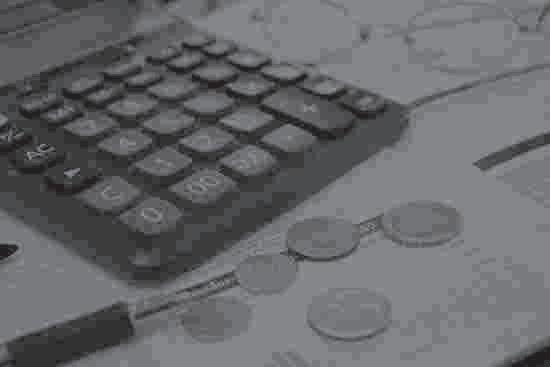
Victoria Davis is Senior Planner with the Upper Valley Lake Sunapee Regional Planning Commission. She can be reached by phone at 603.448.1680 or by email at vdavis@uvlsrpc.org.
9:00 am - 4:30 pm
Tuesday, September 19, 2023
Littleton Opera House
In -person only: $90
Attendees receive the 2022 edition of The Basic Law of Budgeting publication and 2023 Supplement.









